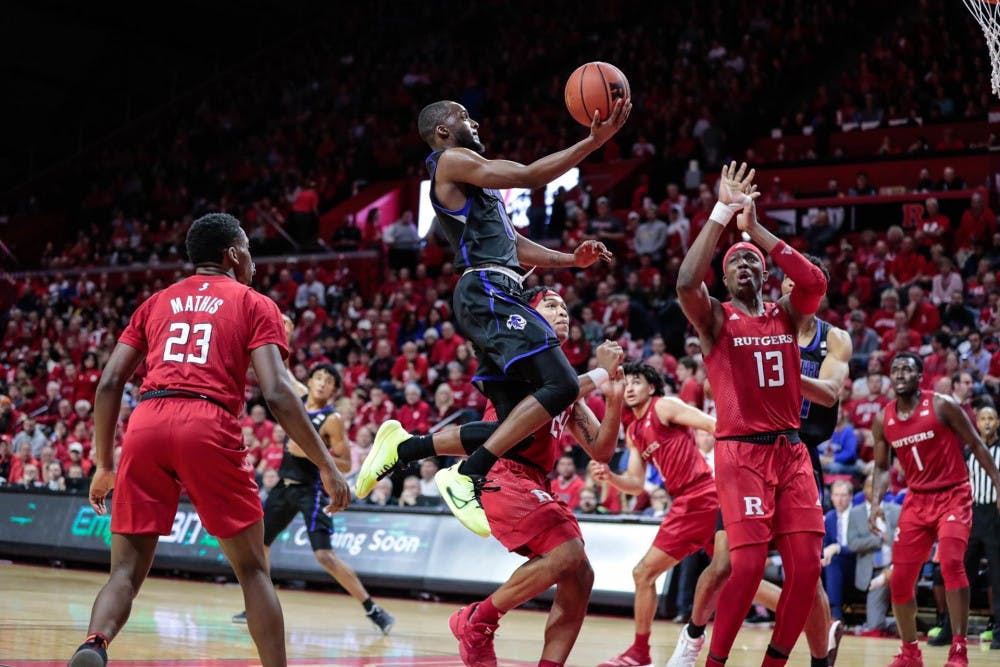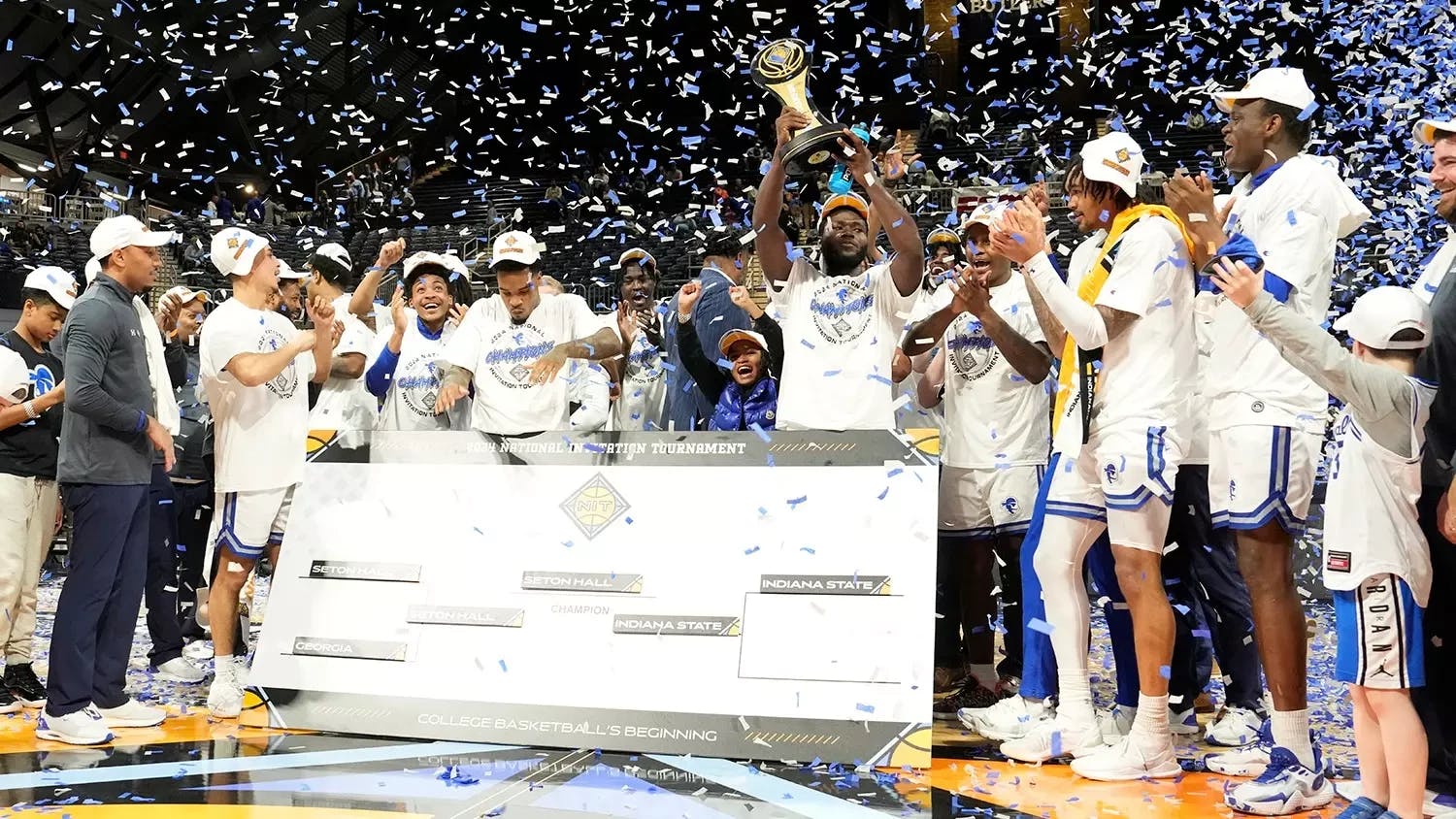When it comes to college hoops, regional rivalries have consistently dominated the minds of local fans and created. In New Jersey, Rutgers and Seton Hall sit just 30 miles from each other and have left New Jersey split. The schools grew a disdain for each other during their 23 years together in the Big East, but conference realignment has stripped the rivalry of the in-conference stakes that the matchups once included. While the Big East provided a framework for Rutgers and Seton Hall to face once, twice, or even three times each season, the split has put each school into a position to make an effort to face the other each year creating a novelty to a once frequent rivalry.
Thus, in 2014 the Garden State Hardwood Classic was created. Here, New Jersey fans of college basketball battle as the two teams face each other in a single non-conference game that has left the state divided between red and blue, but lost is the occasional Big East Tournament matchup and conference standing stakes that were once sacred to teams in regional proximity.

College basketball was in a constant state of flux from 2010 to 2015 with confusion and controversy running ram- pant. This time of frequent changes in conferences for major colleges were mostly driven by football revenue, cable subscribers and greater prestige or reputation. These reasons can be summed up into one word: greed.
In late 2009, the Big Ten, the nation’s oldest intercollegiate athletic conference, announced they would begin a “thorough evaluation of options for conference structure and expansion.” Speculation would suggest the Big Ten was looking to add more markets for their Big Ten Network television con- tract that would be expiring in 2017. Nebraska soon took the open invitation and solidified the Big Ten as a hockey conference while furthering boosting their football, but this did not do much to increase the BTN. They had their eyes on a market unlike any represented by the Big Ten: New York City. The Big Ten extended an invitation to Rutgers to leave the Big East as their football conference seemed it would be coming to an end or going through a steep dropoff. Though Rutgers had had moderate success under Greg Schiano just a few years earlier, the addition of Rutgers and the stealing of Maryland from the ACC just a few months earlier were seen as hits to the reputation of Big Ten football.
Despite this fear, these ad- ditions lead to the BTN being added to cable subscribers in the New York City and Wash- ington, D.C. metro areas and the 2017 signing of a $2.64 billion TV agreement with ESPN, FOX, and CBS. Steve Berkowitz of USA Today re- ported the 12 longest standing Big Ten schools received $54 million in 2018, higher than any other conference by over $9 million.
The Big 12 continued being hurt by conference realignment when six schools were invit- ed to join the Pac-10, though only Colorado would officially do so, and Missouri and Texas A&M left for the SEC. The Big 12 was encouraged by the decision of those five others to not join the Pac-10 and added TCU, formerly committed to the Big East, and West Virgin- ia, formerly of the Big East.
The Big East continued to lose when Syracuse, Pitt, Notre Dame (went independent in football) and Louisville saw the greener (money-infused) pastures of ACC football and basketball leaving the Big East to just 10 schools: Cincinnati, Connecticut, DePaul, George- town, Marquette, Providence, Seton Hall, South Florida, St. John’s and Villanova.
There was constant specu- lation of what the remaining ten schools in the Big East would do and countless rumors swirled around what schools would be asked to join. Blog- gers posted their opinions with ideas as outlandish as pairing with the Big West for a con- ference championship game to pairing with Conference-USA for football, from adding var- ious east coast urban schools like Boston University, North- eastern, Fordham and NYU while extending south with Richmond and William & Mary. Even only adding Cath- olic schools like LaSalle, St. Joseph’s, St. Bonaventure’s and Xavier while pleading with No- tre Dame not to leave was seen as an option and, a personal favorite, telling Seton Hall to join the Atlantic-10 and em- brace their on campus arena (Fully biased note here: Seton Hall is currently amidst the upper echelon of the Big East with four straight tournament appearances and a fifth seem- ingly locked in). There were big plans that seemed universally unpopular.
Some suggested with the Big 12 and Big East both being ravaged by conferences better at football, why not merge, while others turned to smaller schools such as Tulane as the answer to the football question. The “Providence Plan” was devised by the smaller, private, and more basketball-focused schools to secede from what the Big East had become with their 7-3 two-thirds majority vote.
The Catholic 7 dissolved what is now known as the “Old Big East” to pursue a bas- ketball-based Olympic sports conference, and, though there were suggested name changes, Catholic-10, VAT(ican)-10, or Cardinal Conference, they were able to keep the Big East name along with the famed Big East Tournament venue, Madison Square Garden. They then add- ed Butler, Creighton and Xavi- er and signed a 12-year, $500 million contract with Fox to fill out much of the program- ming for their new Fox Sports networks, a deal that ESPN refused to match despite the Big East’s role in the birth of ESPN.
Since conference realignment “ended” in 2013, three conferences have won national championships: the AAC, which included the Big East leftovers after the separation of the Catholic 7, the ACC and the Big East. The New Big East has sent at least four teams to the NCAA tournament each season since with a high of seven teams in 2016-17. The Big East has gotten back to a level skeptics thought would take much longer if even at all.
Under the leadership of com- missioner Val Ackerman, the first president of the WNBA, the Big East has had amazing success as seen in in 2018 with incredible attendance num- bers for the annual conference tournament surpassing each of the Power 5 conferences, even the Big Ten, who used the Big East’s venue for their tourna- ment just a week before the Big East. As Yahoo’s Dan Wetzel puts it, “There is an ethos to the Big East Tournament, one that the other leagues have forever failed to duplicate.” The Big East boasts a history ingrained in the “Mecca of Basketball” that no league can counter, even if it is a second iteration of the league that set a Final Four record of three schools from one conference. MSG is an oft-touted recruiting tactic that has continued the legacy of an unmatched conference tournament.
Jon Veenstra can be reached at jonathan.veenstra@student.shu. edu.





